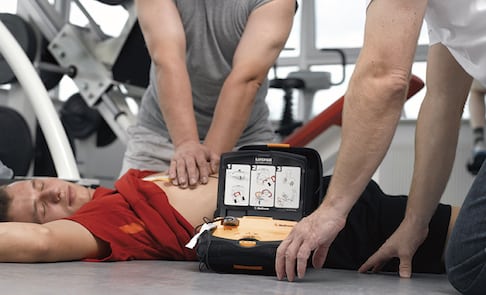For consumers, there is no shortage of options in what we can purchase. From groceries to vehicles, we are bombarded with information to steer our spending, but when it comes to lifesaving equipment, like an automated external defibrillator (AED), what options are the most important?
In theory, all AEDs are designed to do the same thing: analyze the rhythm of the heart and deliver a lifesaving shock if needed. All AEDs have a battery and electrodes. All AEDs have a manufacturer’s warranty. All AEDs are portable and light weight.With so many similarities, how do you evaluate what really matters most when making a purchase that could save a life? We recommend you begin by considering the following three factors when evaluating an AED.
Energy
The success of how much energy is needed to resuscitate someone experiencing a sudden cardiac arrest (SCA) has been studied again and again with the same conclusion – energy does matter.
CPR Coaching
Finding someone unconscious and unresponsive is frightening. And if it has been a few years since your last CPR course, prompts from the AED that don’t distract you from the victim are incredibly important.
Having an AED guide you on CPR techniques, and coaching on the correct depth for both adult and children patients at appropriate times during the cardiac arrest response, will give the responder greater confidence and make a challenging situation better.
Intuitive Design
It is widely understood that seconds count in a cardiac arrest. How quickly you can access an AED, apply the pads, and deliver the shock is critical. Since you want your attention on the patient, be wary of video or text screens that may distract you from what is happening with the patient.
An AED must be simply designed with clear visuals and audible prompts so the responder’s full attention can be given to the victim.
Know Which Questions to Ask
Based on the three considerations above, here are a few questions to ask when making an AED purchase for your workplace or home:
- How much energy does the AED deliver?
- Does the AED increase the energy delivered if the first shock isn’t enough?
- Does the AED have a metronome to follow for CPR compression rate?
- Will the AED tell me when to give rescue breaths?
- When you look at the device, is it obvious how to access the pads?
- Are the pads easy to apply?
Workplace Medical provides a complete AED response package including training, online maintenance tracking, and medical oversight. To learn more, please visit our AED Products page.
